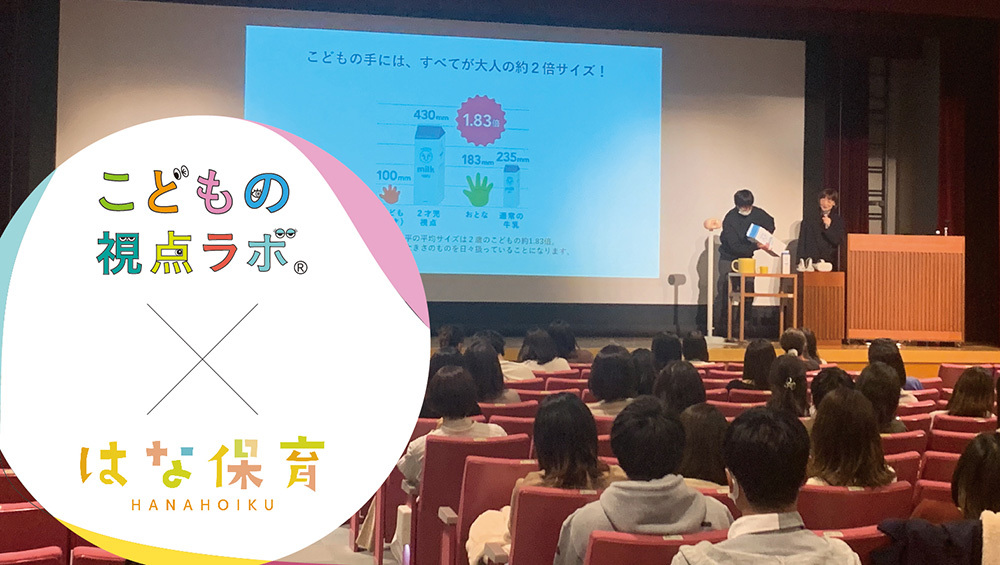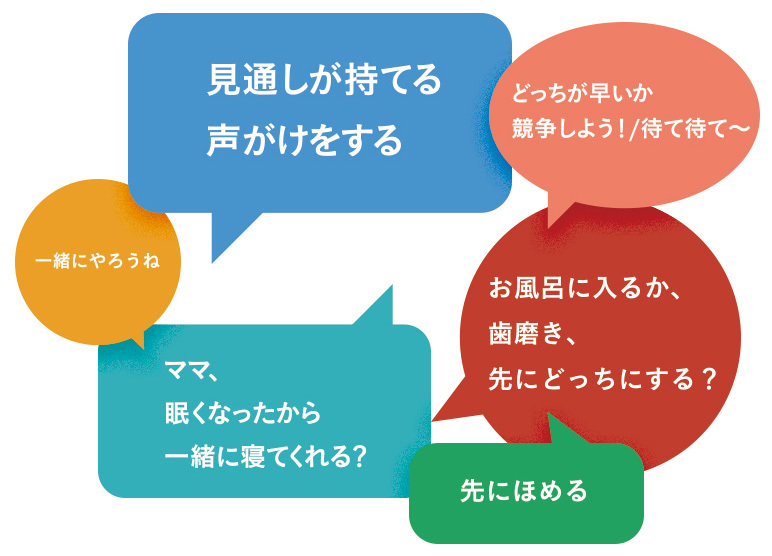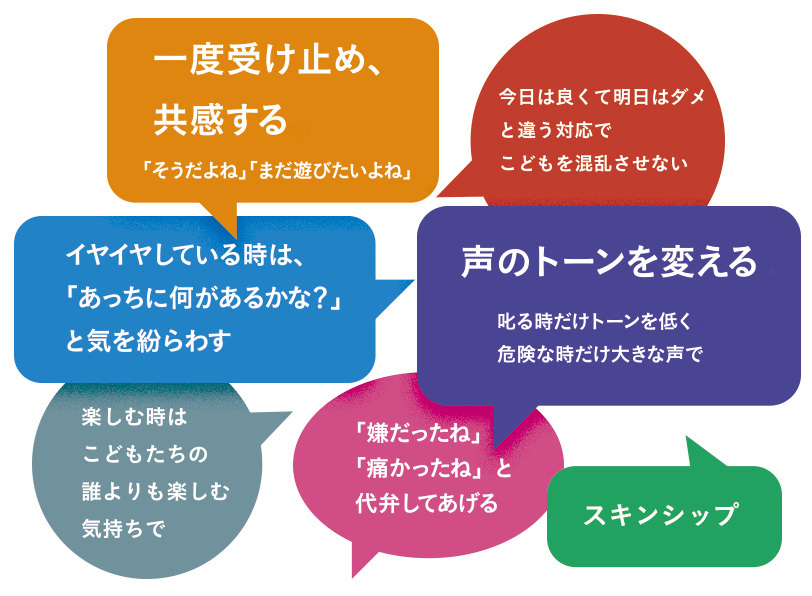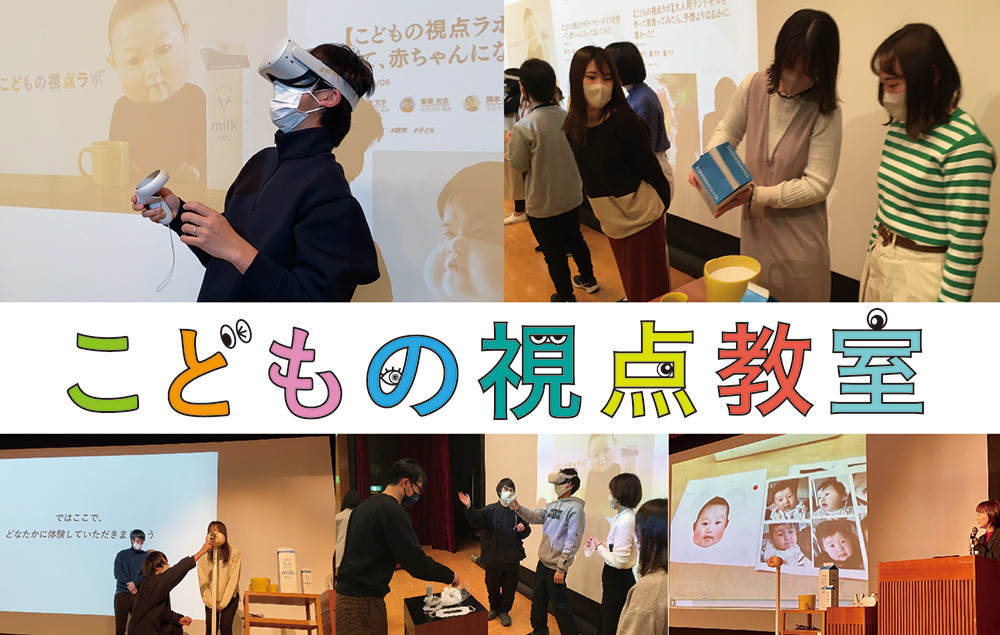The Children's Perspective Lab conducts activities to deepen understanding of children by encouraging adults to see things from a child's viewpoint.
Recently, we were invited by Hana Hoiku, which operates 24 licensed childcare centers in Aichi, Gifu, and Mie Prefectures, to give a presentation about our activities to 150 current childcare workers.
Since so many childcare workers had gathered, we seized the opportunity to ask them about "Effective Ways to Interact with Children from a Childcare Worker's Perspective" – insights parents often overlook! We conducted a pre-event survey and held a discussion on the day. From these, Children's Perspective Lab's Fumiko Ishida and Kenji Ozaki have selected and present the most eye-opening insights. A must-read for anyone struggling daily with interacting with babies and toddlers!
Q. How can I get my child to eat properly?
At daycare, they eat well, but at home, they get up from the table, play around, or quickly say "I'm full" and leave food behind. If there are any tips for smoother mealtimes, please share them.
Answers from the Nursery Teachers
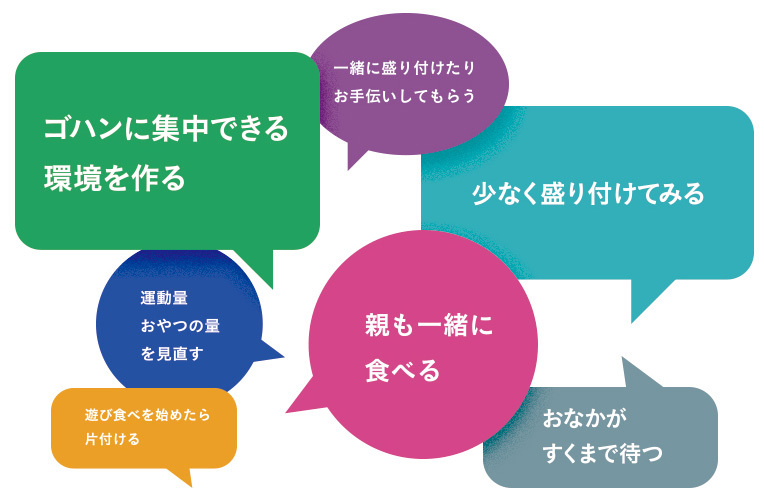
Ozaki: This question comes from a lab member who is a mom to a 4-year-old and a 2-year-old. My 2-year-old daughter also struggles to focus on eating at all, and it's frustrating.
Ishida: My kid was a terrible play-eater too, so I was shocked seeing her sitting properly and munching away during nursery school observation day. Other moms were murmuring, "How? Magic?" Group dynamics probably play a role, but it's amazing, right?
Ozaki: The answer that really clicked for me was "create an environment where they can focus on eating." Things like keeping TVs and smartphones out of sight, not placing toys nearby, positioning the chair so they're facing away from distractions to help them concentrate on their meal. It's true, home is full of temptations. I tried this as soon as I got home (laughs).
Ishida: There was also talk about checking if the table height is just right and if their feet can touch the floor. For me, "serving smaller portions" was a blind spot. Serving less means you can praise them for finishing it all, and you can give them that sense of accomplishment by saying, "Wow, you asked for seconds!" I totally thought, "That makes sense!"
Ozaki: Also, when I heard "wait until they're hungry," I realized, "Oh, I don't have to force them to eat!" It was a revelation. Lately, I try to wait as long as time allows.
Ishida: That ties into "reevaluating activity levels and snack amounts," right? If they're eating snacks without moving, of course they won't get hungry. Yet expecting them to eat just because it's mealtime is unreasonable. The advice to understand each child's pace and create an environment where they genuinely get hungry made me reflect on my past self. I realized I'd been telling my child to eat when they weren't hungry, even though I wouldn't eat if told to when I wasn't hungry either.
Q. What words should I use to prompt action?
When getting ready or at bedtime, we tend to resort to fear tactics like, "Hurry up and do XX or the monster will come!" or "Ghosts will appear!" Please tell me if there are more positive and effective words.
Childcare Workers' Responses
Ozaki: Many responses to this question emphasized "giving clear expectations." Examples include: "Let's go outside after you get dressed," "We'll play lots together after you brush your teeth!" "Let's do puzzles after you use the toilet!" "We'll read a picture book after you get into bed," "Here's why going to bed early is great."
Ishida: Definitely seems more likely to get them moving than just saying "Get dressed!" or "Get into bed!" It's hard to do something you don't want to do without understanding why. If something fun is waiting afterward, they might think, "Okay, I'll do it."
Ozaki: I thought it was brilliant to let them choose between two things you want them to do, like "Do you want to take a bath or brush your teeth first?"
Ishida: It makes them feel like they're acting on their own will. It seems especially good for that age when they want to do everything "by themselves!" Praising them first, like "You can get dressed? Amazing!" also seems like it would get them to tackle things in a good mood. I wish I'd tried that when my kids were little.
Q. Please share tips on how to praise effectively.
When they proudly say, "Look, Mom!", we tend to praise them with the same phrases like "That's amazing!" or "You're so good!". Teachers who get "Look!" from the whole class—do you have any special ways of giving praise?
Childcare workers' responses
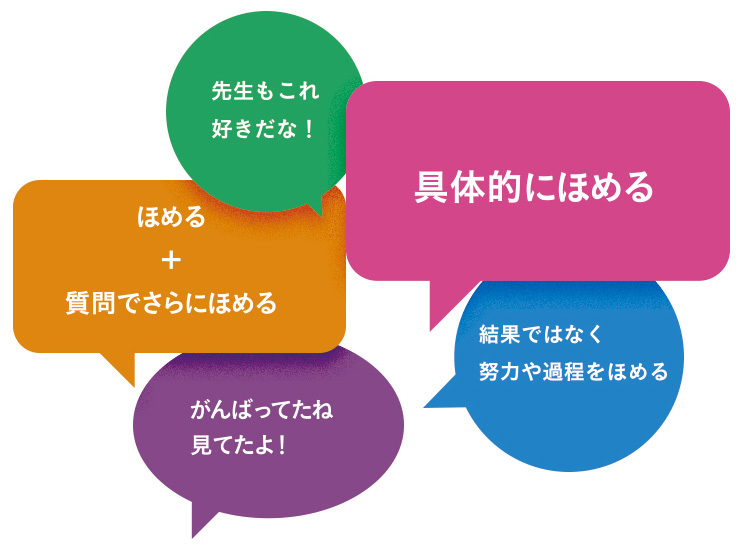
Ishida: Many responses here focused on "praising specifically." For example: "You drew it so big!" "The flowers here are beautiful!" "So colorful and well done!" "That red here looks cool!" "You connected so many blocks!" "You put your legs into your pants all by yourself!" Even with just one drawing, you can find things to praise—size, parts, colors, anything. It made me realize I should praise more specifically and more often.
Ozaki: "Praise + follow-up questions for more praise" – I realized my wife does this with our daughter. I hadn't been doing it myself. Responding with a question like, "These flowers are beautiful – why did you choose red?" keeps the conversation going and helps me understand my child's still-developing speech. Also, "praising effort and process, not just the result" really struck me.
Ishida: You mentioned praising with things like, "You really tried hard," or "You thought about doing it this way yourself."
Ozaki: We tend to praise when they succeed or accomplish something, but this advice made me realize I should praise them especially when they're frustrated by not succeeding.
Ishida: I also thought "You were trying hard. I saw that!" was wonderful—it lets the child feel noticed even when you're not physically close. Hearing them say "Teacher likes this too!" is heartwarming, right? Ah, I thought, children watched over by childcare workers like this are truly lucky.
We received so many truly wonderful responses to the next question that I want to share them all.
Q. If you have any "personal tips" for getting along well with children, please share them.
Nursery teachers' answers
Ozaki: Many responses emphasized "acknowledging their feelings first and showing empathy."
Ishida: Even when saying, "It's getting dark, so let's go home," if you try to accept their feelings first, your phrasing changes completely: "Yeah, you still want to play, right? I get it. But it's getting dark, so let's come back tomorrow." Just being a little more conscious of this seems like it could significantly change your daily interactions.
Ozaki: That feeling of being understood stays with the child, right? Personally, I tend to do things like "OK today, but no tomorrow" based on my own convenience, so that really hit home. It made me reflect on my daily behavior.
Ishida: And then there's "distracting them." When my child was about one year old, a childcare worker picked them up while they were wailing and said, "Oh, look, look at that!" to divert their attention. They stopped crying instantly. I remember thinking, "Ah, that makes sense!" because I'd been trying to confront their crying head-on, whereas this technique used something else to distract them.
Ozaki: Changing your tone of voice is another technique that feels very nursery teacher-like, and I was impressed.
Ishida: It's a great way to help children understand what's not okay without yelling or harsh words.
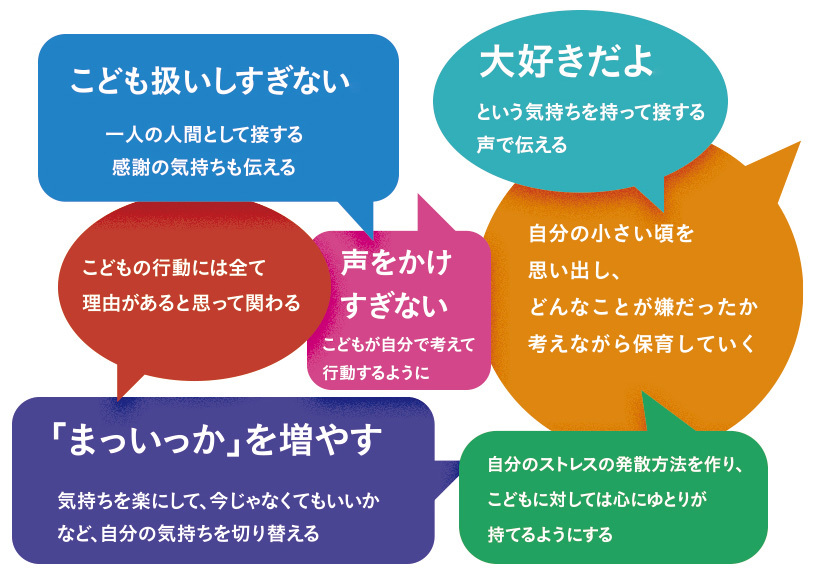
Ozaki: During the discussion, several childcare workers mentioned, "When a child is really throwing a tantrum and it's impossible to handle them (if possible), I ask another childcare worker to take over," and "Sometimes just having a different person calms them down." That really stuck with me. Oh, I thought, maybe when my wife is dealing with our daughter's tantrums, I should try taking over and soothing her myself.
Ishida: Increasing "Oh well" moments is definitely a key point we want to convey to parents. It ties into creating your own stress relief methods. Life with kids rarely goes according to schedule, so building up more "Oh well" moments within yourself creates mental breathing room.
Ozaki: When you're busy with work or other things, it's easy to get irritable, so I'll keep this in mind. "Not over-communicating" is also important, right? We tend to jump in and help or do things for them ourselves.
Ishida: Above all, always interact with the feeling of "I love you." And express it. If I ever feel my mental space shrinking, I want to revisit this advice from the childcare workers.
Ozaki: Everyone's insights were incredibly valuable. I'm so glad I got to hear them!
Now, at the Children's Perspective Lab, we host "Children's Perspective Workshops" like the one requested this time. These workshops use hands-on experiences—like feeling what it's like for a 2-year-old to hold milk—or trying VR to see what it's like to be scolded by a giant-sized adult! We tailor these sessions to your needs, whether for local governments, companies, or university training programs. Please contact us via the "Inquiry Form" below.
We also operate the experiential cafe "Children's Perspective Cafe" (hosted by ITOCHU SDGs STUDIO) in Gaienmae, Tokyo. Come experience menus designed to make you feel how large food and drinks would be if adults became children!

【Overview】
Organizer: ITOCHU SDGs STUDIO
Cooperation: Children's Perspective Lab
Venue: ITOCHU SDGs STUDIO (2F Itochu Garden, 2-3-1 Kita-Aoyama, Minato-ku, Tokyo)
Hours: 9:30 AM - 5:30 PM (Last order at 5:00 PM)
Closed: Mondays (If Monday is a holiday, closed the following business day)
Access: 2-minute walk from Exit 4a of Gaienmae Station (Tokyo Metro Ginza Line), 5-minute walk from Exit 1 (towards Kita-Aoyama) of Aoyama-itchome Station (Tokyo Metro Ginza Line, Hanzomon Line, Toei Oedo Line)
*For details, please visit the official website.
*Please note: You may need to wait in line during busy times. If the wait exceeds one hour, we will post updates on the crowd situation via our official Instagram Stories.


